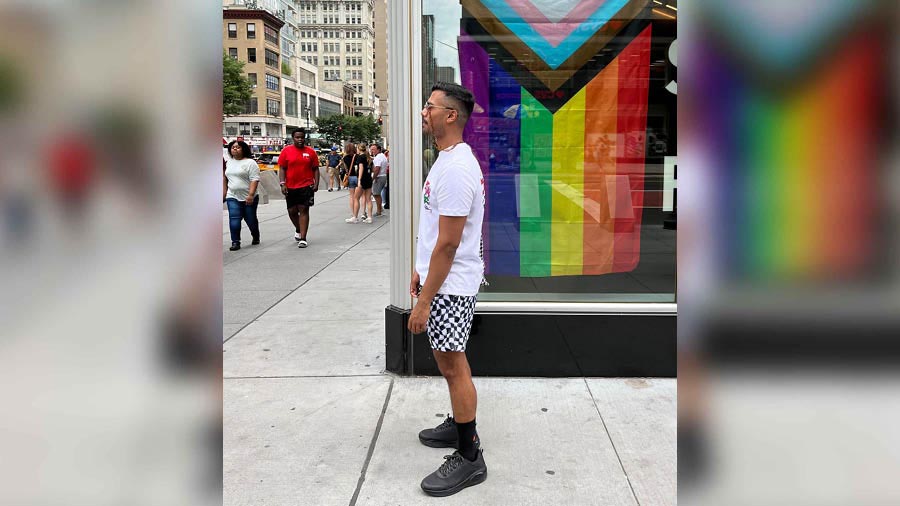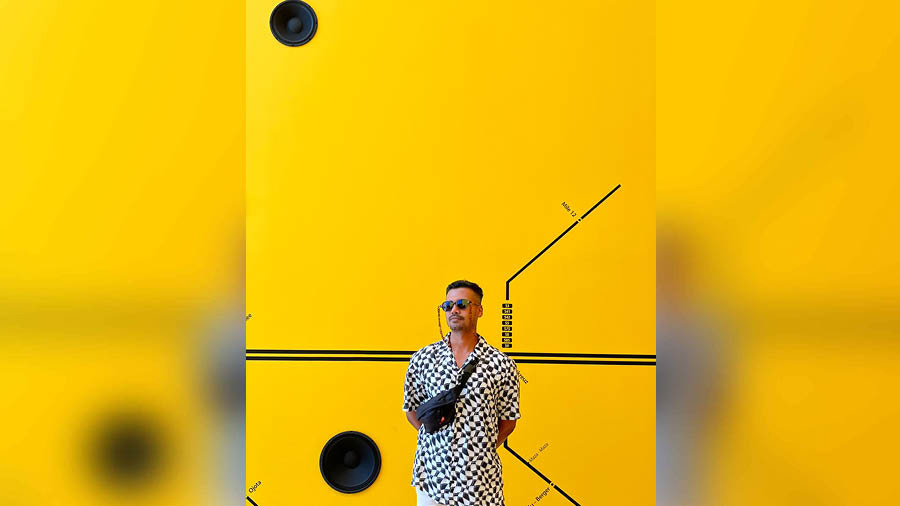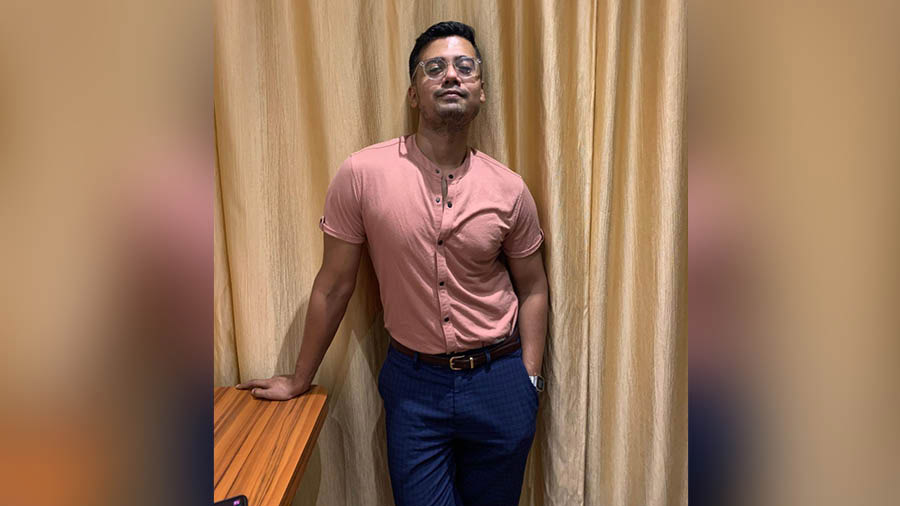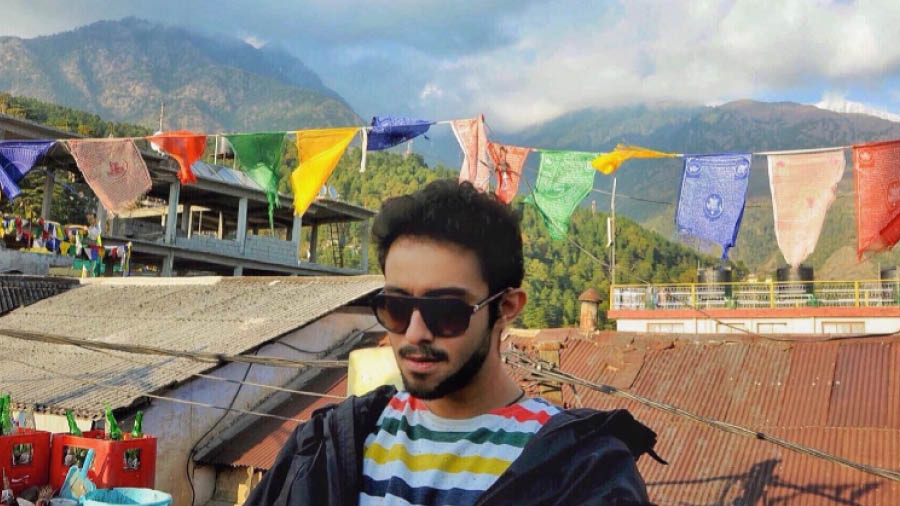“When we talk about Pride, we mention Harvey Milk, Marsha P. Johnson and the Stonewall Riots. But what about Indian queer activists?”
This was the question that drove Dr Anindya Kar, a psychiatrist with the National Health Service (NHS) in Gloucestershire, UK, to do something for the queer community.
His research on queer stories prompted him to start @lgbthistoryindia, an Instagram-based archive that garnered a strong following during the pandemic. In a Zoom interview that ran across two continents and till the wee hours, My Kolkata caught up with Kar about his fascinating journey into documenting all things queer.
Anindya grew up in Kolkata and emigrated to the UK last November.
He became aware from an early age that he didn’t align with heteronormativity. “Generally, people start exploring their queerness in their late teens and early twenties and have to deal with a lot of internalised homophobia. This happened to me when I was just 12, because I always knew,” Anindya recalls.
Early years spent in an all-boys’ boarding school helped Anindya understand what he liked although the period also left him with some adverse childhood experiences. “When I left that school and came back to Kolkata for my Class XI and XII, I actually went back into the closet and couldn’t make friends. I was very apprehensive about whether I could talk about my sexuality with any of my peers,” says Anindya, adding that this situation may almost feel alien to today’s queer youth, who have multiple online spaces to form connections and share stories. “When we grew up, gender was not binary. We would see hijras (eunuchs) on the road. Unfortunately, that was the only term people knew about alternative sexuality and kids who came out would often be mocked by their parents, ‘Tui ki hijra’?” he recounts.
After school, Anindya took admission in Calcutta National Medical College. During his second year, the Supreme Court recriminalised Section 377 and Anindya remembers seeing an unnatural outburst in prejudice, even among the educated. “There was a picture in our department where two men were having sex and it was labelled ‘sodomy’. I asked my forensic professor to remove it because people from all backgrounds and social classes study at government medical colleges and such images encourage negative attitudes towards same-sex attraction. However, he didn’t agree.” This only strengthened Anindya’s resolve and he started working on a research paper that would study the attitudes of medical students towards homosexuality. “Everyone in my class got grants from Indian Council of Medical Research (ICMR) for their research papers, except me,” he adds.

Dr Kar has research paper which study the attitudes of medical students towards homosexuality
A shattered Anindya drew hope from Dinesh Bhugra, who was the first openly gay man to be elected as the president of the World Psychiatric Association in 2014. He congratulated Bhugra on Twitter and was surprised when he responded. “We had an email conversation and when I told him what happened with my research, he told me that he had done a similar study in the 1990s and offered to do the study again with me.” With Bhugra’s help, Anindya completed his study that very year and it was published. Bhugra also assured him that they would make a position statement banning conversion therapy. This report forced the Indian Psychiatric Society to take notice and reconsider its position on the matter and went on to become a foundation for many activists.
Since then, Anindya has published 14 globally acknowledged papers on the mental health of the LGBTQIA+ community. This also ignited in him the desire to do something for the community beyond the realm of academic medicine. “While studying queer history, I realised that it was a lot like going to therapy, where you talk about your history and conflicts. But I didn’t find any research on the history of the community in India. Most of the time, the narrative revolves around global names that most Indians can’t relate to. The decimalisation of Section 377 is not because of the Stonewall Riots, but because of those Indian activists who have been fighting for us for centuries,” he says.

Anindya has published 14 globally acknowledged papers on the mental health of the LGBTQIA+ community
The seeds for Indian queer documentation had been planted since Anindya’s youth and he remembers being amazed by the intellect of many queer activists he interacted with, which gave him a strong sense of community and allowed him to find his identity within the LGBTQIA+ community.
Anindya met Nil, fashion designer and a prominent member of Kolkata Pride, for the first time when I was 19 and he was 32. “We became very good friends and I was astonished by how confident he was of his sexuality even though it was absolutely hush-hush at that time. It taught me that I was more privileged than him, we could meet other queer individuals at the time through social media, which wasn't the case during his time,” Anindya says.
A firm believer that each generation has to fight battles to make things easier for the next, Anindya shares how many people who are middle-aged now would write letters in their youth mentioning what they wanted and what they were looking for. “They would even mention the colour of the clothes they would be wearing and stand with flowers at a predetermined spot to wait for their partner. If they didn’t turn up, they would stand at the same spot again the next day, hoping to meet them again,” he explains.
A need to highlight narratives like these gave birth to @lgbthistoryindia in 2016. Anindya began archiving the history of India’s LGBTQIA+ community on Instagram, even including many of the aforementioned letters to remind youngsters to not take their privilege for granted. “I barely had followers when I started, but did it purely with the intention of decriminalising Section 377. The page blew up in the pandemic, drawing a lot of people who wanted to understand the community better,” he smiles, adding that most of his followers are not from the community, but allies. “It is nice to see that people are ready to learn, accept and understand,” he adds.
The desire to give a voice also comes from recognising his own privilege, something that Anindya is very transparent about. “My father is a psychiatrist and my mother comes to Pride Walks. Most of her close friends are mothers of my gay friends, so I’ve never had a problem coming out. Most people aren’t as privileged and don’t have the space to talk about their sexuality. I worked in a hospital for two years and heard so many homophobic slurs from fellow doctors. It would shatter any queer doctor and impact their mental health. We talk about inclusivity but we have discrimination within ourselves, because we are not aware of our own history. When you are privileged, you have a voice and you need to use it for a better outcome. People need to understand the struggles of their own countrymen, because history always repeats itself.”
There is a certain romanticism when Anindya talks about the evolution of queer encounters and of people finally claiming their space. He says, “People used to communicate via landline earlier. My generation had Yahoo Messenger, and now people have Tinder and Grindr. Sadly, people don’t talk in clubs anymore, they go and check who is nearby on the apps and talk to them virtually.” But the apps have helped normalise queer interactions, Anindya says, adding that he has met most of his partners, including his current boyfriend of eight years through them. “My friends grew up in India, where having queer sexual pleasures came with the stigma that you would be HIV positive. Having sex would be followed by feelings of shame and an HIV test. These people are now in their 50s and have a midlife crisis when they see the spaces they have lost in their youth,” he says. However, Anindya feels that queer-friendly spaces like Kitty Su have salvaged their historical dearth, drawing people from well outside the city, who save up to attend the parties every year, and wait till 4am to take the first train back. “It’s so beautiful to see trans people who stitch their sarees themselves to look their best for Kitty Su,” he adds.
The nature of queer relationships is also changing. Anindya reminisces how in his youth, people met their partners in the few queer-friendly clubs of the city like La Dolce Vita in New Market. “Back then, you met people with just eye contact. It was a very American 1980s vibe,” he recalls. But this clandestine nature led to people hating their bodies and sensations for years, he adds. “It often took a lot of romantic and sexual experiences to get over that. But with social acceptance and normalisation, this fear has changed. Today’s youth aren’t seeking multiple partners and are finding security from the start. But while we see monogamy as the norm, two consenting adults should have the right to establish the kind of relationship they want,” he says.
Anindya explains that the evolving nature of queer relationships has impacted heterosexual ones, too, and adds nuance to the argument for same sex marriage. He draws attention to how most Indians getting married in the 1980s did not sign a legal document, and it was purely a ritualistic union. “The last 20 years have seen a dramatic change in India concerning partners’ rights. Our country has opened up to capitalist interests, so economically India loses 1.3% of its GDP by terming same-sex marriages illegal,” he says.
Beyond the economic benefits, Anindya also talks about how preventing queer marriages leaves queer individuals without a legal recourse when it comes to intimate partner violence. “Intimate partner violence is very prevalent among LGBTQIA+ couples, too, but you can’t file a complaint at a police station against someone who is not your legal partner.”
Legal partnership also comes with several succession-related benefits that give your partner much more security. “Often, both partners are from abusive families and want to sever ties. But their assets still go to the families after their death just because they are not legally married. One should have the right to decide who gets your hard-earned money,” he says.
When asked what is the one mistake people keep making when it comes to the queer community, Anindya chuckles and says, “People only see us as doctors, film stars or social workers. They don’t see that besides that, we are also gay men.”


